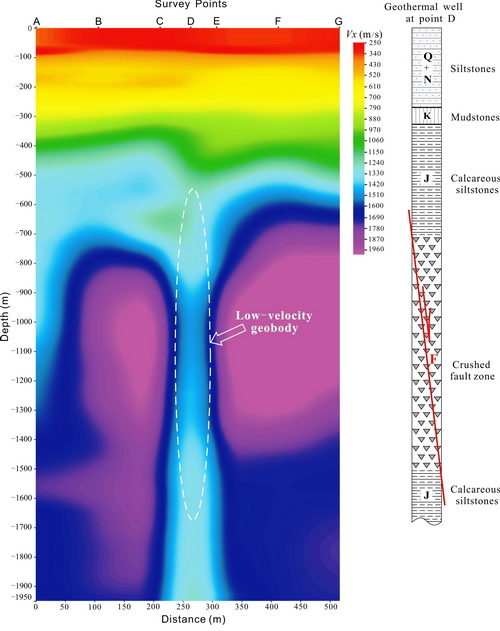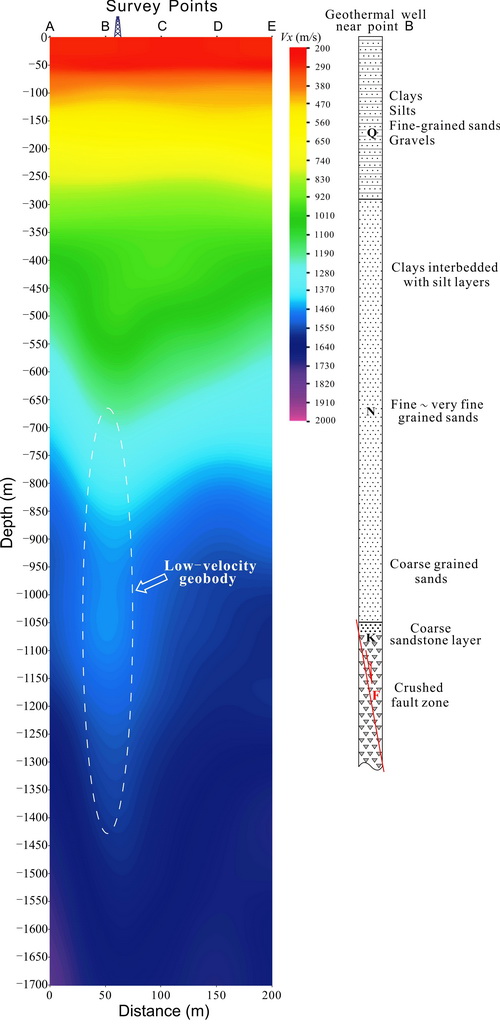Vice Professor XU Peifen and her collaborators map deeply-buried subtle faults using the spatial autocorrelation microtremor array analysis.
They identify a low-velocity anomaly which is approximately 50 m wide at about 550–1400 m deep. A well drilled based on this anomaly later successfully produced hot water and further proved that the low-velocity anomaly is caused by a highly fractured zone at depths from 700 to 1500 m.
Their results clearly demonstrate that the microtremor survey method can be effectively utilized to map deeply-buried faults and structures for geothermal energy exploration. The most effective way to increase the drilling success rate and, hence reduce the geothermal exploration risk, seems to be the development of new exploration methods and the integration of various geophysical technologies.

Figure 1. Inverted apparent S-wave velocity section using microtremor data acquired at a geothermal exploration site in Wujiang, Jiangsu Province. (Image by XU)

Figure 2. Inverted apparent S-wave velocity section using microtremor data acquired at a geothermal exploration site in Rudong, Jiangsu Province. (Image by XU)
Xu et al. Mapping deeply-buried geothermal faults using microtremor array analysis. Geophysical Journal International. 2012, 188(1): 115–122 (Download Here)